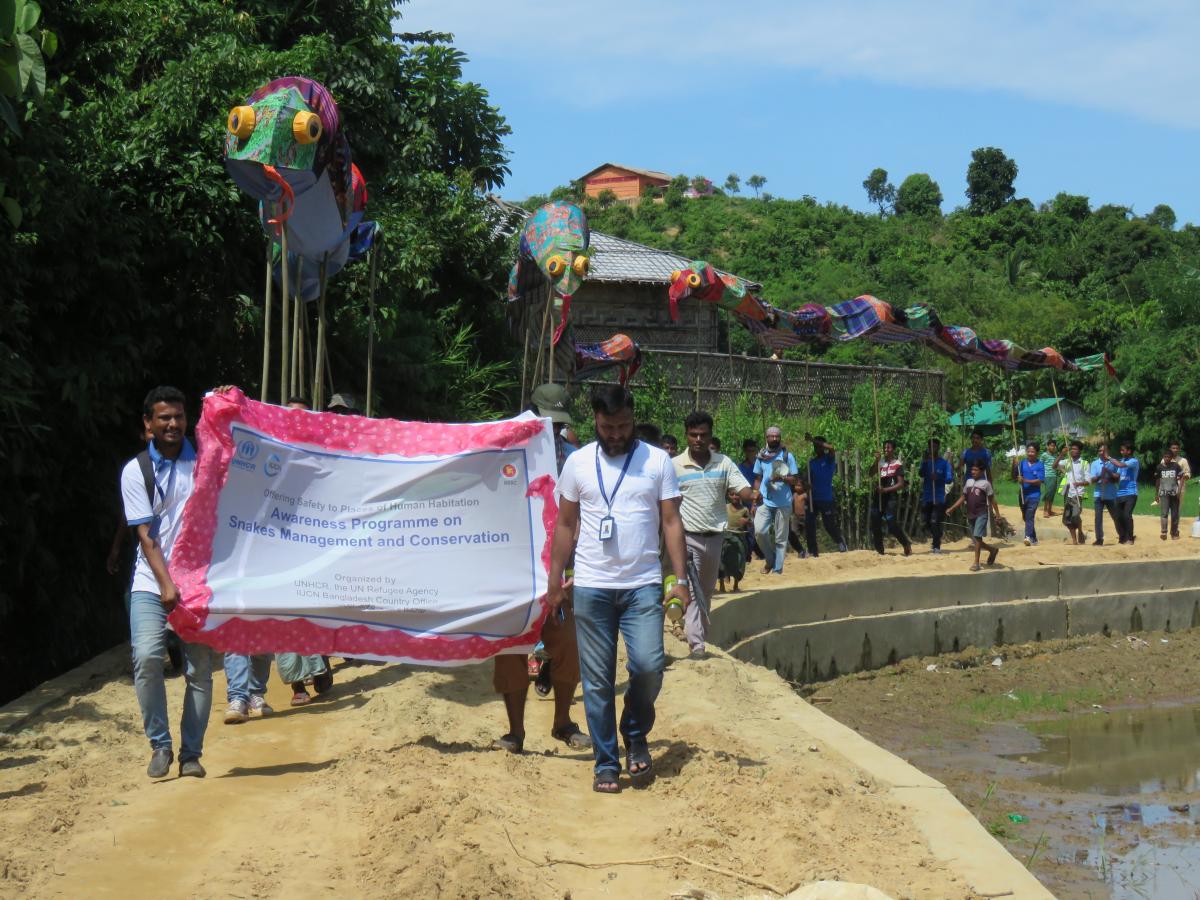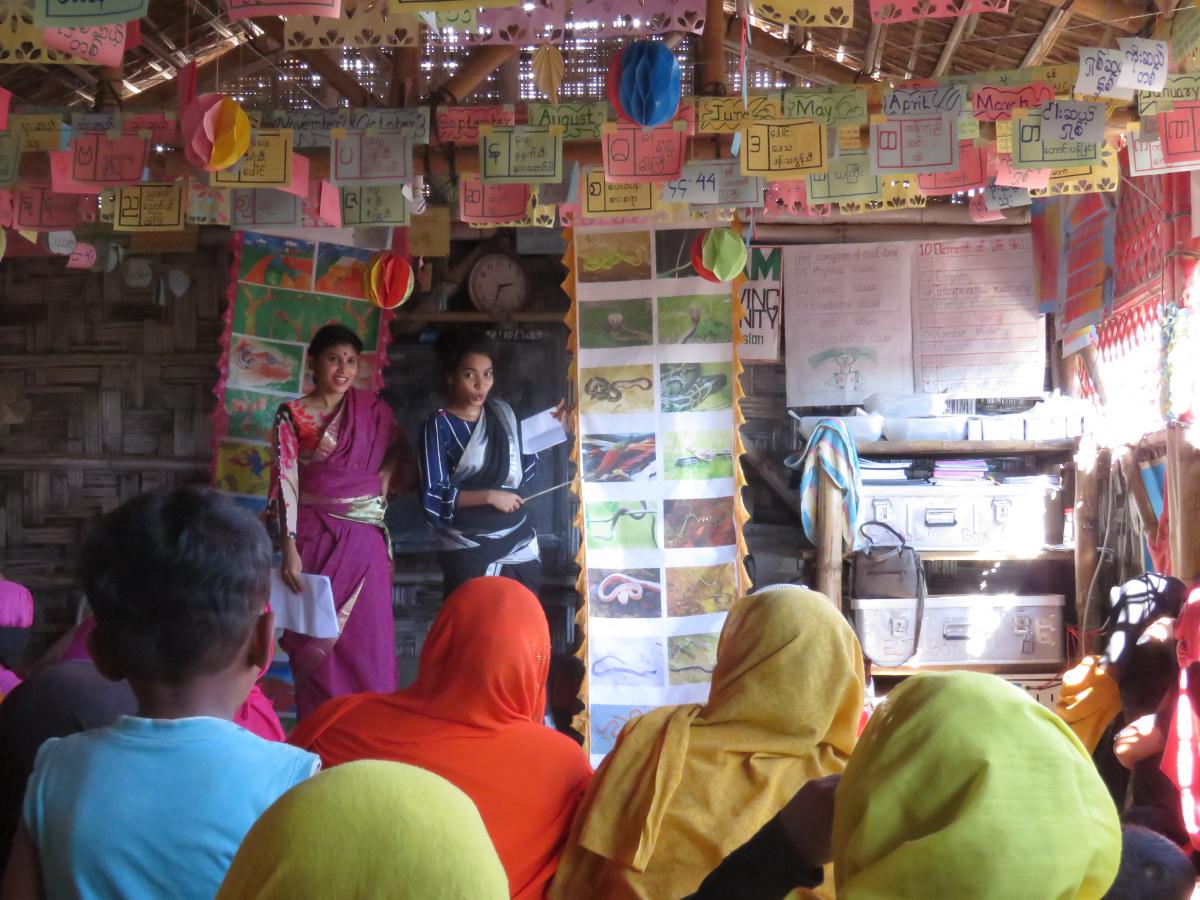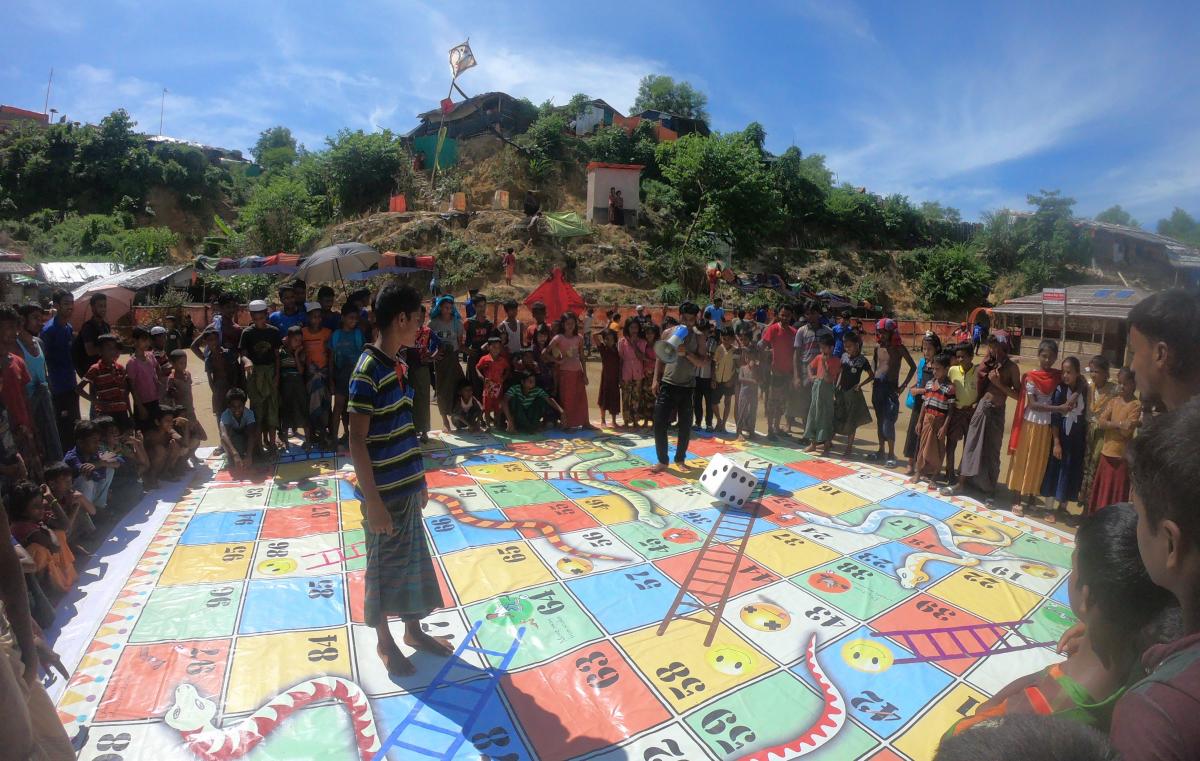Increasing awareness on human-snake conflict in Cox’s Bazar, Bangladesh
With the aim to mitigating human-snake conflict in and around the refugee camps in Cox’s Bazar, Bangladesh, IUCN with support from the United Nation High Commissioner for Refugees (UNHCR) launched a three-day Awareness Programme on Snake Management and Conservation activity on 14 October 2019.
Around 2500 participants composed of students and community members attended the programme including representatives from the Refugee Relief and Repatriation Commission (RRRC).
“This is a new activity in our refugee camps, wherein, we encourage co-existence of humans and animals. The active participation of the community members proves that they are eager to resolve conflicts with snakes in this area”, said Md. Ehsanul Hoque, Assistant Environment Officer, UNHCR.
During the programme, IUCN discussed on snake movement and snakebite management in order to increase the refugees’ knowledge about the options they have to mitigate conflicts with snakes. Also, ecological importance of local snakes was discussed among children using colourful arts and crafts.
Students were also provided with art materials to make snake puppets while they were briefed about snakes’ habitats, foods and movements. Motion picture presentations through bioscopes were arranged for children to learn about the importance of conserving snakes and on how to manage snakebites. Women participants were taught about snakes through local Bengali lyrical dramas Poter Gan and Kissa.
On the second day, a colourful parade around the camps was organised featuring community members carrying giant puppet snakes. The parade passed through snake-infested areas to encourage community members to adopt options to mitigate human-snake conflicts rather than resort to killing the reptiles.
“Before, we didn’t know much about snake movement and snake bite management. I think this activity will help us to take right decision when we face snakes in and around the camps and may save our lives”, said Md Jubayer, one of the participants during the event.
“We have learnt a lot about poisonous and non-poisonous snakes and their roles in the ecosystem. Now, we will be able to mitigate conflicts between us and snakes”, said Humidur Rahman, community member of Cox’s Bazar.
Cox’s Bazar district in Bangladesh is considered the world’s largest refugee settlement in the world with an estimated 745,000 Rohingya refugees taking shelter in the area. The site is home for critically endangered Asian elephants, birds and charismatic reptilians like King Cobra. With the influx of refugees from Myanmar, these species were extensively disturbed with some of their habitats now occupied as refugee settlement sites.
Started with a project to minimise conflicts between elephants and refugees in Cox’s Bazar in 2018, UNHCR and IUCN have been partners in the implementation of programmes related to human-animal conflicts in the area.
With the increasing reports of snake killings by panicked refugees in the camps, UNHCR and IUCN launched the community awareness programme to address problems arising from human-snake conflicts. In addition, the programme encourages community members to adopt mitigation options instead of harming or killing local snakes.
The project also aims to increase the displaced community’s awareness on the importance of biodiversity and forests.






